If you are a wine lover who doesn’t regularly enjoy bottles from Roero, you are missing out on some of the most delicious wines that Italy has to offer…and I mean all of Italy. There’s really no shame in being unaware of Roero’s wines, which haven’t gained near as much commercial traction as they deserve in the USA—for reasons that can be explained clearly. However, it is definitely a shame to miss out on Roero’s terrific renditions of Nebbiolo, Barbera and Arneis if you love the wines grown around Alba and the broader district of Barolo and Barbaresco. Recently I was fortunate to devote a week to tasting several hundred wines while conducting winery visits and speaking with producers, and I’m eager to communicate my findings in this first column on Roero…which won’t be my last one.
It would be natural enough for me to begin by explaining the reasons why Roero’s wines aren’t more widely represented and appreciated in the USA, but we can get to that soon enough, and I don’t wish to seem like I’m making excuses for the region.
Better to begin by indicating that top renditions of Roero DOCG are superb expression of Nebbiolo, and that the best Riserva releases can equal or surpass many wines from nearby Barbaresco or Barolo—and do so for significantly less money. Similarly, lovers of Barbera should be aware that many of the best examples in all of Piedmont are grown within the Roero district’s limits, even though they don’t include “Roero” in their label designations. Moreover, those who love fine Italian white wines combining alluring aromas, generous but fresh flavors, and minimal oak influence (stylistically akin to fine Pinot Bianco from Alto Adige) will find dozens of excellent options labeled as Roero Arneis DOCG.
There is not one word of hype in the paragraph you just read. All three assertions are demonstrably true, and I can point you toward many bottles that will demonstrate the truth of them.
Additionally, I should let you know that I’m not overly enthusiastic about these wines because I’ve just returned from tasting them for the first time. I’ve been tasting dozens of bottles from Roero when traveling to the broader area at least once every year since 2010, and my recent trip to focus on Roero was back in late May, so I’ve had plenty of time to settle down and offer considered evaluations of their quality and value.
Why, then, aren’t Roero’s wines more widely available and broadly appreciated in the USA? One obvious reason is that Roero’s immediate neighbors—Barolo and Barbaresco—are vastly more famous. Not vastly better, but still vastly more famous, and as the old saying goes: Nothing succeeds like success.
Retailers and restaurateurs in the USA know they can sell Barbaresco and Barolo in the USA even if a producer’s wines are just solid; the appellation’s name will do the job. Of course, importers and distributors know this too, whereas it will take real effort to explain Roero’s wine to those who buy from them, and any buyers will likewise need to work to sell them—not just stick them on retail shelves or write them onto restaurant wine lists. This has led to a “vicious cycle” in the USA, with American wine lovers having few opportunities to taste, enjoy, and then seek out Roero wines, and because few wine lovers here are seeking them, few importers and distributors work to bring in more Roero wines…and the cycle continues to turn.
An additional hindrance is that Roero’s wines are more varied than those in the Barolo or Barbaresco districts, which has advantages in some ways but also diminishes the region’s claim to fame. Much more vineyard land in Roero is devoted to white grapes, namely Arneis, and though that makes perfect sense because the variety makes superb wine on Roero’s steeply sloped hills, this makes the appellation’s identity less straightforward.
Barbera thrives in the Roero, and is frequently planted in excellent sites rather than getting 2nd or 3rd class vine placement (which is usually true—not just occasionally so—within the appellation boundaries of both Barolo and Barbaresco, where almost all the best spots go to Nebbiolo). However, when labeled as “Barbera d’Alba,” the excellent Barbera wines sourced from Roero bring no fame to Roero specifically, as their labels are indistinguishable from lesser Barbera wines grown on less promising ground in Barbaresco or Barolo.
Indeed, the problem is worse than just that. Although the geographical indicator on a 3rd rate Barbera d’Alba grown within the Barolo district is the same as one grown on a 1st rate site in Roero, the average consumer is much more likely to know the producer’s name on the Barolo-based Barbera, and to choose the inferior wine for that simple reason.
On top of all that, because the word “Roero” doesn’t appear on the excellent Barbera wines grown there, the region doesn’t get credited as a prized zone for the grape variety, as nearby Nizza does, along with Monferrato to a lesser extent.
Shifting from wine to wine tourism, Roero’s vistas are every bit as beautiful but also more varied than those of its more famous neighbors. The hills are more individuated and sharply defined, whereas Barbaresco offers broad swaths of vineyards in villages like Treiso and Neive, just as Barolo does on the huge slope running up to La Morra. What one sees when driving in Barolo or Barbaresco is essentially a monoculture of grapevines. There’s no doubting how impressive these huge swaths of vines can be, but Roero shows a very interesting patchwork of peach and hazelnut trees as well as natural forests interspersed with vines around its twisting roads. Hiking and biking are really better in Roero, and there are many excellent restaurants too, but the fact is that Barolo and Barbaresco ensnare more than their rightful share of the tourists heading into the area around Alba from Milan or Torino for just a day or two.
These are explanations—not excuses, and those who taste the wines sourced from Roero will learn quickly that they require no excuses. Wine lovers are far more adventuresome than the average drinker of spirits or beer, and those who venture to Roero or taste the wines where they love will be rewarded by excellent value. This is the silver lining in Roero’s somewhat beclouded reputation, and based on many tasting experiences over the years, my estimate is that a wine made in Roero will be 35% less expensive that a wine of equal quality sourced from within the districts of Barbaresco or Barolo.
There’s no way that a single column can include all of the terrific wines I tasted in May, as I returned with 19 pages of single-spaced notes on my computer as well as two full handwritten notebooks. I’ll follow up with many more reviews here on Wine Review Online during the months ahead, and perhaps another column as well. For now, perhaps the best way to begin is for me to choose a single wine to profile from each of the wineries I was able to visit, tasting on site and conducting interviews (though I tasted many more wines during a walk-around event near Torino, including some exceptional examples that I’ll soon review).
The following entries are ordered alphabetically according to the producer’s family name, and I’ve selected one especially noteworthy wine from each of them while also indicating other releases you should try with confidence if you find a bottle. In some cases, these “Watch for” wines are even more exciting than the one I’ve chosen to profile, but I want to indicate the region’s range and variety, which is as much a strength as it is a challenge.
To clarify how I’ve designated the wines, Roero Arneis and Roero Arneis Riserva both hold DOCG classification under Italian wine law, but Nebbiolo-based wines don’t specify the grape variety (as is true of Barolo and Barbaresco, but not Langhe Nebbiolo or Barbera d’Alba, for example), so I designate these as “Roero DOCG” to avoid confusion, leaving “DOCG” off the others. Stated differently, the normale Nebbiolo wines are the only ones with DOCG appended to them in what appears below, though all the Arneis and Nebbiolo-based wines from Roero hold that classification level. The point score at the end of each entry corresponds to the featured wine, prior to the
“Watch for” wines that are also excellent from each of the producers. I have added “+” symbols for wines that are certain to improve for those who cellar them. Prices are approximate:
Nino Costa Roero Riserva “Gepin” 2015: The Arneis and Nebbiolo
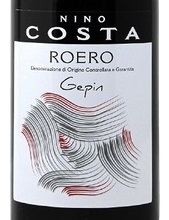
releases from this house are excellent with very consistent results across different vintages as well as the division between straight DOCG and Riserva renditions of the reds. As a case in point, my score for the non-Riserva Roero from 2015 was exactly the same for this Riserva from that year, though the wines are totally different, with this showing much more overt wood character. That’s easy to understand once one knows that it was aged in 100% new tonneau (generally 900 liters in volume, or the equivalent size of 4 Bordeaux barriques). This seems a little less audacious when one learns that the toast level is extremely light, but still, the wine shows a lot of oak at this point. However, the concentration and energy of the fruit is outstanding, and 10% of the clusters were air-dried a la Amarone, and this added ripe sweetness really helps counterbalance the wood influence. A wine for the cellar, but a very solid bet.
92+
Watch for: Arneis “Seminari” 2021 and 2020; Arneis “Sarun” 2021, and Roero DOCG “Gepin” 2014, 2015 and 2016.
Generaj Roero Riserva “Bric Aût 2016: This winery is nicknamed
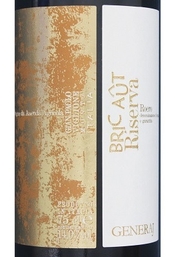
“the General” in Italian, after the founder from the 19th century, who wasn’t a general but was very influential in his time. Beppe Viglione runs things here currently along with his daughter, and they represent the 6th and 7th generations, respectively. The facilities seem attractive and unpretentious, but I can’t speak to the technical aspects of the winemaking equipment because we spent the duration of my visit tasting and talking. Both the wines and the conversation were wonderful. I worry that my two new friends will be displeased that I’m featuring a wine that their US importer chooses not to take, but the winery only sends about 8% of the production to the USA, and the importer should know that passing over this wine is, um, insane. Usually, I avoid telling other people how to conduct their business, but this is an exception, as both the 2018 and this 2016 were fantastic. The fruit is still coiled with power for further development, but this current release is already extremely complex, with savory notes (especially bottle bouquet) already evident and extremely appealing. Once fermentation was completed, it weighed in at more than 15% alcohol, but doesn’t show the slightest hint of heat, and the combination of complexity and integration here is superb.
93
Watch for: Arneis “Bric Varomaldo” 2021 and Arneis Riserva 2019 from the same site; Arneis Riserva “Quindici Lune” 2019.
Malvirà Roero Riserva “Mombeltramo” 2017: This is one of three
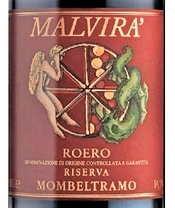
extremely impressive Riservas from a large-ish and very impressive producer, with the “impressive” part more about quality than quantity. (Though it is worth noting that this winery would be suitable for group visits, and we need to get more people visiting Roero.) The other two Riservas are “Renesio” and “S.S. Trinità” and all three were terrific in both 2017 and 2009—I was fortunate to taste all 6 in total at the winery. Choosing this “Mombeltramo” 2017 was not so easy even though this was my preferred release in both 2017 and 2009, the reason being that Arneis “Renesio” 2013 was sensational (and “2013” is not a misprint). Returning yet again to the “Mombeltramo” 2017, it is very appealingly soft in texture and open in flavor for a wine of its age and particular vintage, with truly wonderful balance between primary fruit notes and emerging savory accents. A complete wine of exceptional quality.
93
Watch for: Arneis “Renesio” 2020 and 2021; Arneis S.S. Trinità 2020; Roero Arneis Riserva 2018 “Saglietto” 2018, and Barbera d’Alba Superiore 2019.
Monchiero Carbone Roero Riserva “Printi” 2018: This is as
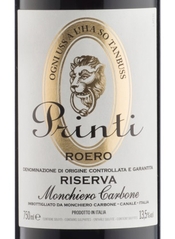
beautiful, interesting, and well-run a winery as you can find anywhere in Italy, and also a premier producer that excels with everything vinous associated with Roero (which is to say, the top bottlings of Arneis, Barbera and Nebbiolo are all marvelous). This Riserva from 2018 is a very serious wine from a relatively soft vintage that sees 22 months in 25-30% new oak in its aging regimen, yet the fruit shines through, with wood lending some spice notes and a whiff of toast but no vanilla or any wood notes that distract from the wine’s solid core (which is fruit sourced from a single plot within the “Srü” MGA or Cru). To be sure, there’s plenty of Nebbiolo “grip” in the finish, and this wine is built to last, but the tannins aren’t coarse or astringent, and they show up late in the wine’s sensory progression rather than terminating the finish prematurely. I’ve tasted multiple vintages of this wine in Italy or when home in the USA, and it never fails to impress; a 2016 that I showed in a wine class this summer was fantastic (as all 42 participants in the class agreed), and a 2006 tasted with lunch at the winery in May was spectacular. On that occasion, tasting “blind,” I was able to guess both the wine and the vintage correctly, though my pride in that was very short-lived, as I then guessed that the 2003 Barbera “MonBirone” was much younger (which is very impressive regarding the wine from that ultra-hot vintage, if unimpressive regarding my guess!).
92+Watch for: Arneis “Recit” as well as “Cecu”; Arneis Riserva “Vigna Renesio” 2016; Barbera d’Alba “MonBrione” 2018; Roero DOCG “Srü” 2019, and the very rare Roero Riserva “Bricco Genestreto” 2015.
Morra Stefanino, Barbera d’Alba Superiore “Zoanni” 2019: This
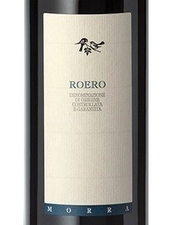
sizeable producer makes very good sparkling, a superb Arneis “San Pietro,” excellent Roero Riserva, but beyond all of that, phenomenal Barbera. This wine obviously doesn’t include “Roero” in its name, but it is grown entirely from the region and is so obviously outstanding that it seemed like the flagship offering to me. This sees 12 months of aging in large-ish oak vessels, with only modestly woody character and fine, slow-and-even development as a result of the oxygen interchange permitted by the cooperage. The fruit aspect of the wine is both pure and concentrated but not “heavy,” and is set off perfectly by savory characters recalling carpaccio and wild mushrooms. Very carefully made Barbera can show an uncanny combination of classy, even aristocratic characteristics along with gutsy, straightforward power that is just shy of “rustic.”
93+
Watch for: Vignetto San Pietro Arneis 2015; Barbera d’Alba Superiore 2019.
Angelo Negro Roero Arneis “Sette Anni” 2015: This is an important
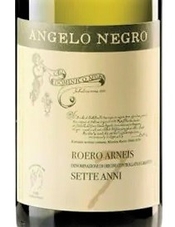
producer on the large-ish side, with facilities to accommodate groups of visitors, but also a clear commitment to quality that shines through the wines. The Nebbiolo-based Riservas are outstanding, but I think this Arneis merits featuring because it broadcasts the variety’s capacity for positive development by being released only in its 7th year (hence “Sette Anni”). Beginning with the 2018 vintage, it will also carry designation as “Riserva,” but you’ll get the idea from one look at this 2015, with the number “7” appearing prominently on both the front label and the capsule. This is bottled relatively early after seven months of sur lie aging and battonage in stainless steel tanks, and the idea of getting it into bottle early makes good sense, as this is definitely not “played out” but rather still has the capacity to improve with additional cellaring. Some aged Arneis wines from Roero show an attractive light “petrol” note akin to aged Riesling, though this one does not, which again indicates that it is coiled for additional development. Other examples display an aromatic note strongly reminiscent of saffron, and though that is very striking, it seems (form my experience, anyway) to be a site-specific, terroir note. In this case, the wine is perfectly integrated, with light floral aromas, impressive substance but no sense of heaviness, and quite fresh acidity—especially from a warm growing season. Terrific already, and destined to be better still.
94+
Watch for: Arneis “Serra Lupini” 2021 and Arneis Riserva “Perdaudin” 2020; Roero Riserva “Ciabot San Giorgio” 2018 as well as Roero Riserva “Sudisfà” 2018.
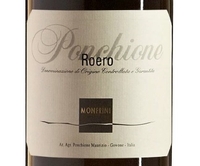 Ponchione, Roero DOCG “Monfrini” Cru 2016:
Ponchione, Roero DOCG “Monfrini” Cru 2016: A family winery established in 1936, now with its 4th generation fully involved, this is a house that does excellent work with Nebbiolo but also makes utterly delicious, amazingly age-worthy Arneis. This wine is aged for 16 months in small barrels, but the wood is definitely not overdone, as this shows lovely floral topnotes and open fruit recalling red berries above all. The purity and balance of this wine is very impressive.
92
Watch for: Roero Arneis 2021 but also, with luck, 2015 (94); Barbera d’Alba “Donia” 2018.
Marco Porello Roero Arneis “Camestri” 2021: This is a modest but
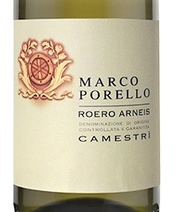
impeccable family winery run by modest people—who make pure, delicious wines. Some Favorita and Barbera are made here, but I was only shown wines made from Arneis and Nebbiolo, which suited me just fine. I can’t fail to select this wine for featuring in light of the fact that I purchased a full case of it online from a USA-retailer while still working in Roero. It shows very appealing floral topnotes without being overly flowery or sweet-smelling, and though finished with zero residual sugar, it is also quite substantial in palate weight—but still fresh with zesty acidity. Saline mineral notes are already emerging, and the wine is even better now than when I tasted it in May. Marco told me that this usually hits its stride in September of the year following the harvest, and that proved to be precisely correct. He is extremely clear in his objectives regarding the wines he makes, and the wines speak to his skill in actualizing those objectives.
93
Watch for: Roero Arneis 2021; Roero DOCG “Torretta 2020” (released this month), and Roero Riserva “San Michele” 2019 (released soon; 2015 tasted at my request was terrific).
Cascina Val del Prete, Roero Riserva 2016: This medium-size family
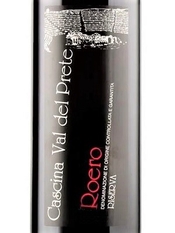
winery shows interests in both tradition and innovation, does excellent work with Arneis, Nebbiolo and Barbera, and is a house to watch with young talent and a bright future. This wonderful Riserva from an indisputably great vintage could be served proudly alongside any top Barolo or Barbaresco, as it shows gorgeous fruit with ripe, expressive fruit notes recalling cherries, raspberries and wild strawberries. Primary fruit sweetness is still abundant as this nears 6 years of age, with emerging savory notes lending complexity. Almost all oak notes have been absorbed, and this is poised for a full decade of delicious drinking ahead.
93
Watch for: Roero DOCG “Bricco Medica” 2019; Barbera d’Alba Superiore “Carolina” 2019; Vino Bianco “Bizzarro” 2021.